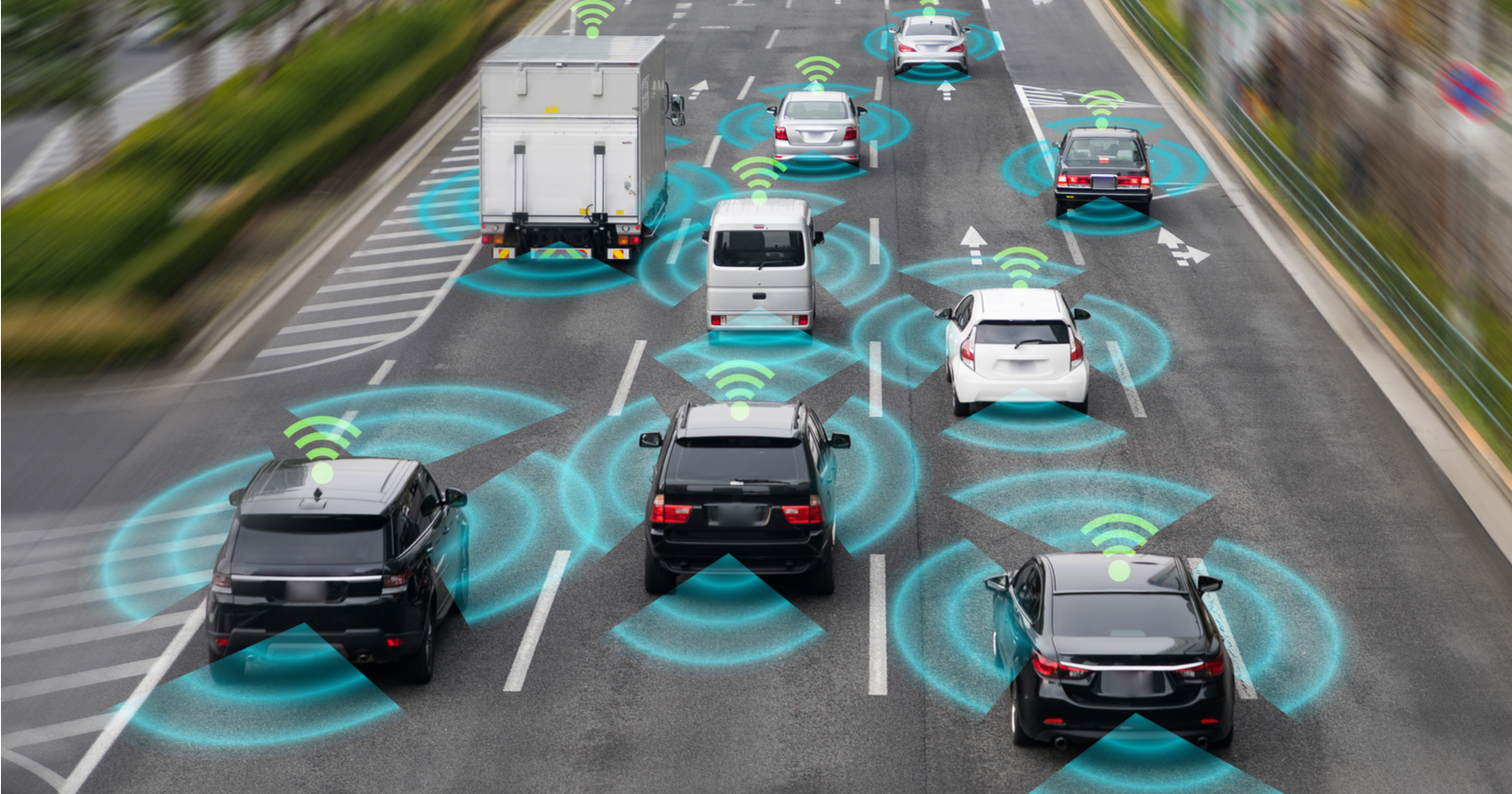It’s no secret that brands regularly leverage targeted advertising tactics to more accurately:
- Hone in on desired audiences.
- Increase the likelihood of conversions.
- Maximize ROI on their digital advertising efforts.
But targeted ads in cars?
While it might seem unconventional now, the concept is no longer out of the realm of possibility.
In fact, it’s something that more companies are considering.
Like many other industries, auto manufacturers like General Motors and others are intent on finding ways to monetize and generate more value from customer data.
As such, it’s only a matter of time before that data is sold to brands, which in turn are used to target ads directly to specific groups of consumers in their cars, trucks, and SUVs.
Targeted Advertising + Cars = A Winning Combination
With vehicles the new frontier of targeted advertising, it’s important to understand its beginnings and potential benefits to brands.
The concept of targeted automobile advertising started to gain momentum with GM’s radio-tracking program in late 2017.
Over a period of three months, the company tracked the radio listening habits of 90,000 drivers in Chicago and Los Angeles, monitoring the volume, ZIP code of the driver, and station selection, while using the cars’ WiFi signals to upload the data to GM’s servers.
That type of data might not seem incredibly valuable. In actuality, however, it was monitored and assessed with the goal of comparing what customers were listening to with what they were buying and where they were stopping to eat, shop, and go for entertainment.
Once it was determined that certain groups and demographics were consistently visiting specific places of business, advertisers could then put targeted ads on the radio stations that were being listened to.
They could also look for groups that might be likely to shop at their business determined by what they bought and the places they frequented.
Perhaps that might beg the question: Is it realistic to expect that consumers would accept that their car might listen to them or track their data?
Perhaps.
Similarly to how we’ve more or less accepted that websites and mobile devices track our consumer behavior, it’s entirely possible that consumers will eventually accept that the same technology placed in cars will track keywords, radio stations, and location data.
By leveraging data science, brands can use that information strategically to determine what’s important to drivers and passengers so that they can better understand, and thus more keenly target, the right audiences.
And if consumers are getting what they want, then chances are stronger that they’ll accept data tracking in cars the way they have accepted it in other areas of their lives.
Radio: A New Avenue for Data-Driven Insights
In order to disseminate these ads directly into cars, brands will have to place their bets on a medium that a user is likely to hear while driving – radio.
Now, in light of the rise of commercial-free app streaming services, radio audiences have dramatically changed, and in many cases declined.
However, perhaps more than any other medium, radio stations still have the ability to gather mass audiences that are often captive during the time they’re in their vehicles.
According to a 2017 Nieman Journalism Lab report, around 90 percent of Americans over the age of 12 listen to AM/FM radio at least once a week — a figure which has only declined about 2 percent since 2009. And the vast majority of that audience listens in their cars.
What’s more, data gathered from automobiles is perhaps more accurate – and thus more valuable – than many other types of data.
For one, it’s immediately applicable.
Advertisers can find out what people listen to, cross reference that data with where they shop, and then target those consumer radio stations with ads for similar shops and related products.
Ads could potentially be for a business that the user is passing on their route, or near their destination.
What’s more, these consumers have mobility. If they’re spending time running errands or shopping, they’re likely in a frame of mind for buying and/or are either in close physical proximity to a potential advertiser.
That said, radio ads frequently don’t have much relevance to listeners – largely because stations are judging their audience incorrectly – representing a slew of missed opportunities for advertisers and lost revenue for stations.
However, broadcasting-targeted, user-specific ads could help turn that around.
If and when consumers do hear ads on the radio, they’ll be more prone to staying tuned in if it gives them information pertinent to their daily activities.
If they can find a new place to visit or a relevant product from the ads they hear in their vehicle, they’ll be less likely to turn away from standard radio stations, even during breaks in the music.
And as streaming services gain more traction, it’s more important than ever for radio stations to find alternative ways to keep listeners and advertisers happy and engaged.
The Marriage of Targeted Radio Ads & PPC
Another untapped opportunity for targeted automobile advertising is that it can work hand in hand with your PPC strategy.
In general, radio ads are designed to target a large and diverse audience, while SEM is aimed at connecting advertisers with specific and targeted groups or demographics.
Combining these strategies, however, offers the best of both, and the potential for even higher ROI.
Ultimately, PPC is about boosting sales and creating leads for the advertiser while elevating relevance to the consumer.
Potential buyers search for products and services, and advertisers have the ability to show a targeted ad for that product or service at the exact time and place that users need to see it the most – when they’re on the brink of making a purchase.
And radio can be a critical vehicle – and catalyst – for successful execution of these PPC goals.
A radio ad can contain a target keyword that is mentioned repeatedly, which can help users remember and associate that particular word with your brand – which in turn allows them to easily locate it when searching online.
For example, a radio ad can offer a memorable jingle for a TV or speakers that a consumer might be considering at an electronics store they visited while doing errands in their car.
That ad from the same vendor can then reappear, with the same keywords, once the user is online, reminding them that they can purchase the item with just a click of a mouse from the comfort of their home or office.
Radio can also be a critical component of remarketing efforts.
Brands can strengthen the results their PPC efforts by determining if a consumer heard a radio ad for their product, and then doubling down by targeting an ad at a user for that same product when they’re back online, thus amplifying the effectiveness of their campaign aimed at boosting ROI and, ultimately, conversions.
So What Does this Mean for Brands?
For now, it’s a waiting game, simply because GM and other manufacturers aren’t yet selling (or “licensing”) the data they collect.
However, brands can start to lay a foundation by attempting to better understand their target markets.
Initially, they can determine what type of music their customers like and which radio stations they listen to, setting the stage for data science technologies that can granularly analyze and parse this data when advertisers are able to use it to their advantage.
While still in conceptual phases, licensing consumer data will be a lucrative endeavor for car companies going forward, and one that is likely on the horizon.
If implemented correctly, it’s a winning proposition for radio stations and car companies – car companies will be helping brands deliver their message through new channels and reach new audiences, which in turn, will result in higher-quality, and more relevant ads on their radios.
And customers can share in that win-win, learning about more brands and products that are much better aligned to the items they need and want to buy.
But perhaps the biggest winners will be the brands themselves, which will have the opportunity to get their name in front of a new and diverse set of users.
What’s more, they can also find unique and creative ways to integrate this new advertising approach with their existing PPC strategies, further increasing their value and efficiency while also maximizing returns.
The possibilities are almost endless.
And while radio advertising might seem like a limited channel for ROI, leveraging it in tandem with PPC techniques can breathe new life into old campaigns and open up new worlds of opportunity for both consumers and brands.
More Resources:





